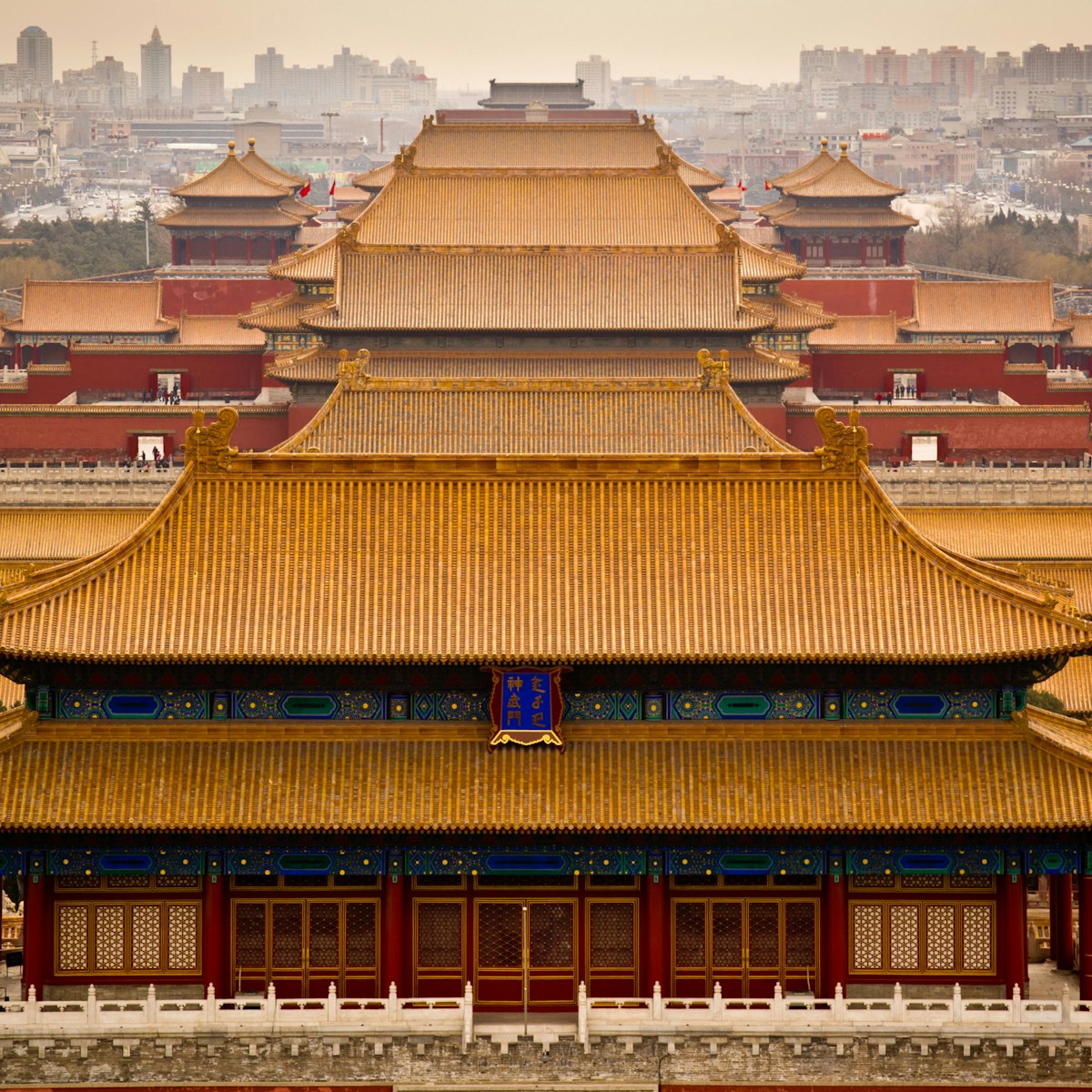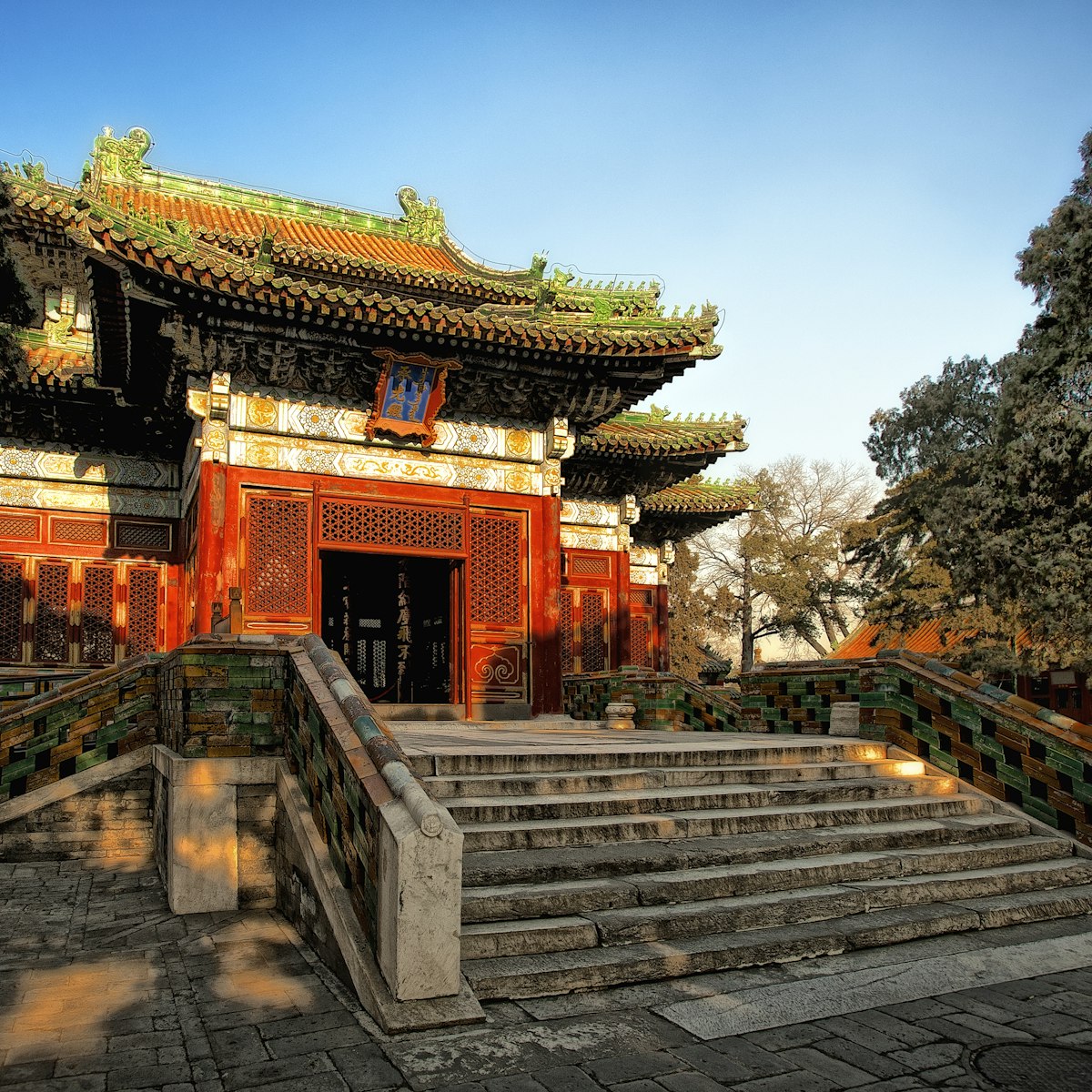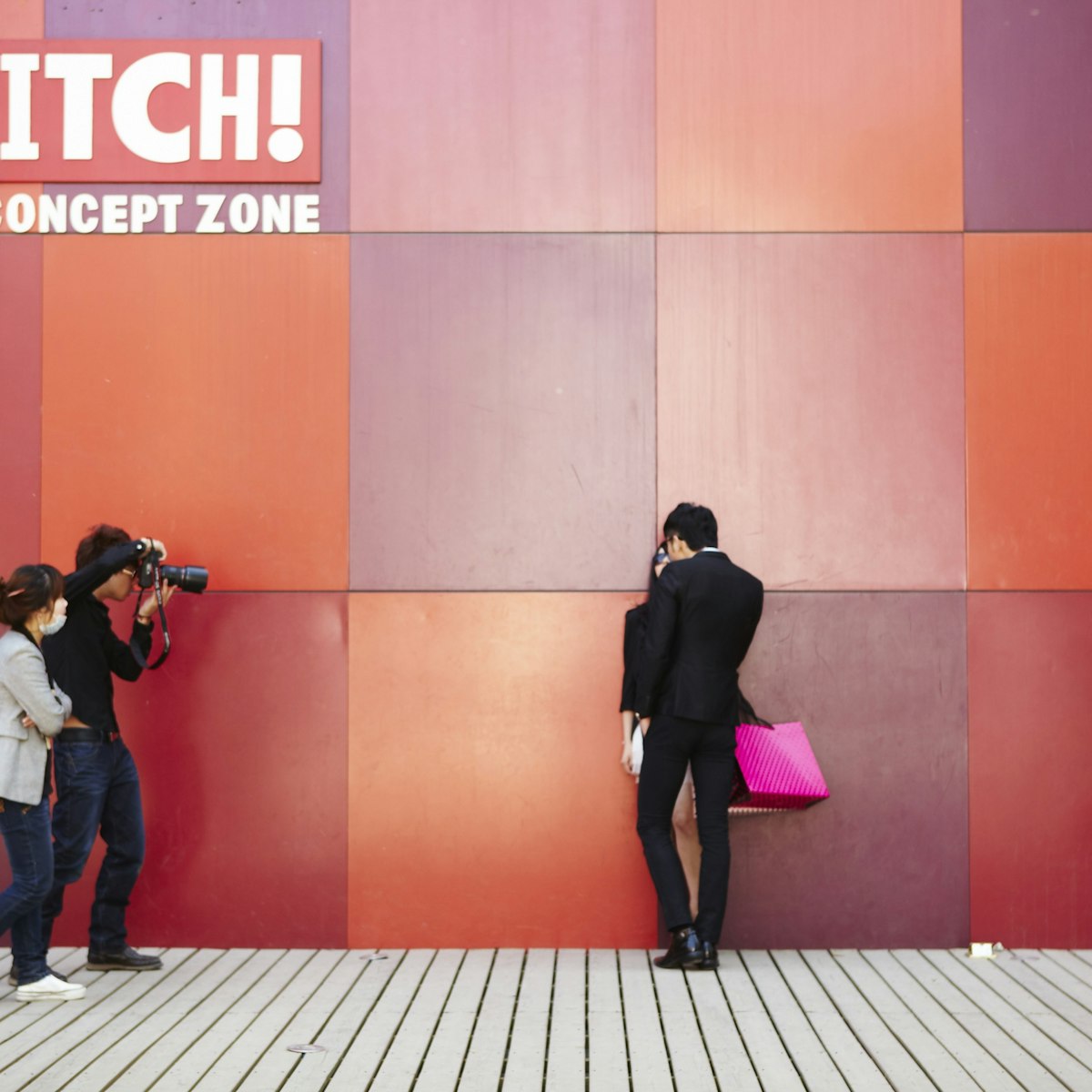A great swath of Beijing's Western Hills (Xīshān) was once an imperial pleasure resort, acres of undulating pine-cypress forest peppered with temples, pavilions and lookouts dating to the Qing dynasty. Opened to the masses as a public park in 1956, Fragrant Hills is busiest in autumn when the maples are ablaze. On reasonably clear days you can see Beijing's skyscrapers, 20km distant, from Incense-Burner Peak. The superb Azure Clouds Temple is reason alone to visit.
For most visitors, Fragrant Hills Park is a thigh-burning ascent up zigzag lanes and endless steps, passing imperial villas and temples, many of which, incredibly, served as summer homes to Beijing's foreign diplomatic community in the late 19th and early 20th century. Allow an hour from the main north entrance to Incense-Burner Peak (Xiānglú Fēng; 557m). From the top you get all-embracing views of the countryside, and you can leave the crowds behind by hiking further into the Western Hills.
Rather than making straight for the summit, you could start with a visit to the Azure Clouds Temple, just inside the park's main north entrance, with its five-towered pagoda and hall of 500 Buddhist luohan statues. Southwest of the temple is the enormous, Tibetan-style Temple of Brilliance (Zhāo Miào), under restoration at time of research, while nearby is Xiangshan's iconic Glazed Tile Pagoda. Both survived visits by foreign troops intent on sacking the area in 1860, and then in 1900.
Then you could take the rather thrilling chairlift (?80 one way, 9am to 4pm) to the peak, saving your energy for a long amble downhill, past a variety of the park's '28 scenic spots' as selected by Emperor Qianlong in the 18th century, several undergoing restoration at time of research. If you exit the park by the less frequented east gate, take a look at the splendid Fragrant Hill Hotel designed by the late IM Pei.
There are restaurants, shops and snacks along Meichang Jie, the old paved approach to the north gate of the park.







